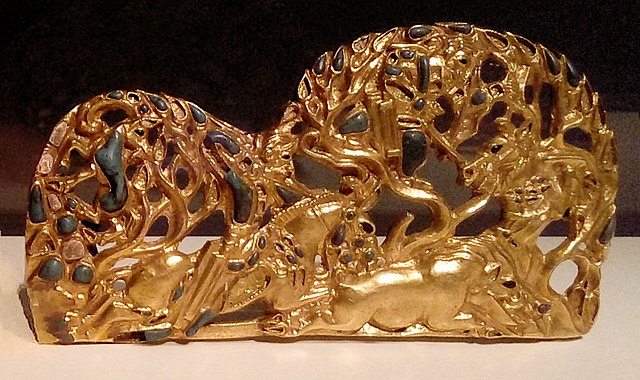The Afanasievo culture, or Afanasevo culture, is an early archaeological culture of south Siberia, occupying the Minusinsk Basin and the Altai Mountains during the eneolithic era, c. 3300 to 2500 BCE. It is named after a nearby mountain, Gora Afanasieva in what is now Bogradsky District, Khakassia, Russia, first excavated by archaeologist Sergei Teploukhov in 1920-1929. Afanasievo burials have been found as far as Shatar Chuluu in central Mongolia, confirming a further expansion about 1,500 km beyond the Altai mountains. The Afanasievo culture is now considered as an integral part of the Prehistory of Western and Central Mongolia.
Gora Afanasieva (Minusinsk Basin).
Ukok Plateau (Altai Mountains)
Shatar Chuluu (Central Mongolia)
Carbon dating of Afanasievo burials.
Siberia is an extensive geographical region comprising all of North Asia, from the Ural Mountains in the west to the Pacific Ocean in the east. It has formed part of the sovereign territory of Russia and its predecessor states since the centuries-long conquest of Siberia, which began with the fall of the Khanate of Sibir in the late 16th century and concluded with the annexation of Chukotka in 1778. Siberia is vast and sparsely populated, covering an area of over 13.1 million square kilometres (5,100,000 sq mi), but home to roughly a quarter of Russia's population. Novosibirsk, Krasnoyarsk, and Omsk are the largest cities in the area.
Horseman hunting, with characteristic Xiongnu horse trappings, southern Siberia, 280–180 BCE. Hermitage Museum.
Chukchi, one of many Indigenous peoples of Siberia. Representation of a Chukchi family by Louis Choris (1816)
Siberian Cossack family in Novosibirsk
View from Haiyrakan mountain, Tuva








